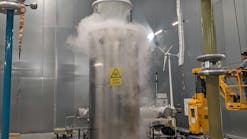My car came with all kinds of digital technologies to make driving life simpler, or so they said in the showroom. It has sensors watching behind me for cars in my blind spots and beside me to see what lane I’m in. It has a backup camera with a calibrated grid to warn me if I get too close to something behind me. It has something like 57 electronic control units (computers) and all of their associated sensors buried throughout the chassis according to the salesperson. It’s a rolling computer. All of this came into focus for me when I got an email from my car.
Yep, my smartphone pinged me – you’ve got mail. Turns out my car was mad at me. I don’t know if having the car mad or the fact it sent me an email was the most unsettling feeling I had. How did it get my email address? I didn’t give it to the car. Heck, I didn’t know the car had an email account. The car’s email informed me I was not being a responsible owner. I had hit the magic number of months the Automotive Mothership had defined for my required maintenance to be performed. Silly me, I had not scheduled a visit to the dealership.
Some research revealed my car has a monitor screen in the dash that puts a lot of laptops to shame. It masquerades as an entertainment center until you press the correct access buttons. Suddenly the satellite radio disappears, and you access a series of drill down screens. They expose more operational functions and information than you ever wanted to know about the daily operations of the car. This was my first run-in with an asset management system outside of my work on the power delivery system. But it got me thinking about my car in a new way. It was a smart device with all the connectivity one could wish for in today’s IoT (Internet of Things) world. It’s a digital technology that isn’t as sophisticated as that in use by the electric power industry, but it can provide some very useful information if I would take advantage of it.
My car’s technology gave me a whole new perspective of advanced technologies such as asset management and their use of IoT applications. It really improves my overall understanding of exactly what these sophisticated programs are and how we can benefit from their capabilities. Applying that knowledge to a substation or a transmission line monitoring system shows us the advantages of these technologies from a simpler perspective. The system gives us the ability to monitor complex systems without the need of any human interaction and provides notification when human interaction is needed like me scheduling maintenance.
Utilities around the world are applying these advanced asset management systems to sort through the mountains of data generated by the utility’s smart grid equipment and to combine it with data from maintenance records. These systems then take that data and produce a real-time assessment of the performance of the various pieces of equipment. Digital technologies such as IoT, cloud-computing and big-data technologies are being included in advanced asset managing platforms and they bring additional capabilities with them.
The state-of-the-art asset management systems being utilized by utilities have the ability to spot trends and schedule maintenance rather than rely on the calendar. Unfortunately, my car’s monitoring system hasn’t made that jump yet. The email it sent was calendar-based maintenance, which isn’t too helpful, but the potential is there. Utilities are able to prevent damage to 765 kV transformers (see T&D World July 2017 Integrated Asset Management for the rest of the story) with their state-of-the-art applications.
That same technology will eventually prevent your car from dying in the middle of nowhere. Of course, the auto manufacturers have to take advantage of what the technology is capable of doing and the car owner has to accept it. In the case of my emailing car, it is only doing marketing to build up the dealership’s service department. So, I hacked into my car’s email capability and shut it down. Calendar-based maintenance is so old school in today’s digital world and wastes valuable resources. Is your company using today’s technology or is it still back in yesteryear?


